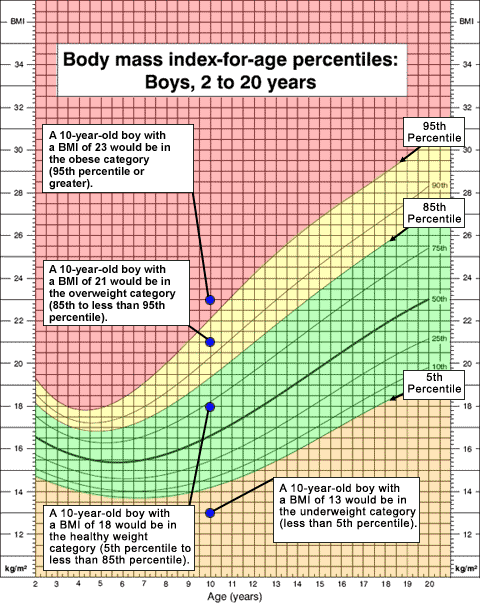Body Mass Index
Body Mass Index (BMI) is a number calculated from a person’s weight and height. BMI is a reliable indicator of body fat for most people. BMI does not measure body fat directly, but research has shown that BMI correlates to direct measures of body fat, such as underwater weighing and dual energy x-ray absorptiometry (DXA). BMI can be considered an alternative for direct measures of body fat and is an inexpensive and easy-to-perform method of screening for weight categories that may lead to health problems.
Body Mass Index (BMI) for Children
For children and teens, BMI calculated based on age and sex and is often called BMI-for-age. After BMI is calculated for children and teens, the BMI number is plotted on the Centers for Disease Control (CDC) BMI-for-age growth charts (for either girls or boys) to obtain a percentile ranking. The BMI is not used by itself when evaluating possible obesity in children and teens. Percentiles are the most commonly used indicator to assess the size and growth patterns of individual children in the United States. The percentile shows the relative position of the child’s BMI number among children of the same sex and age. The growth charts show the weight status categories used with children and teens (underweight, healthy weight, overweight, and obese). BMI tables for adults are not accurate for children and teens.BMI-for-age weight status categories and the corresponding percentiles are shown in the following table.
| Weight status category | Percentile range |
| Underweight | Less than the 5th percentile |
| Healthy weight | 5th percentile to less than the 85th percentile |
| Overweight | 85th to less than the 95th percentile |
| Obese | Equal to or greater than the 95th percentile |
See the following example of how some sample BMI numbers would be interpreted for a 10-year-old boy.

Image source by CDC
To measure your child’s BMI, please enter his/her age, height and weight, and click the Calculate button.

